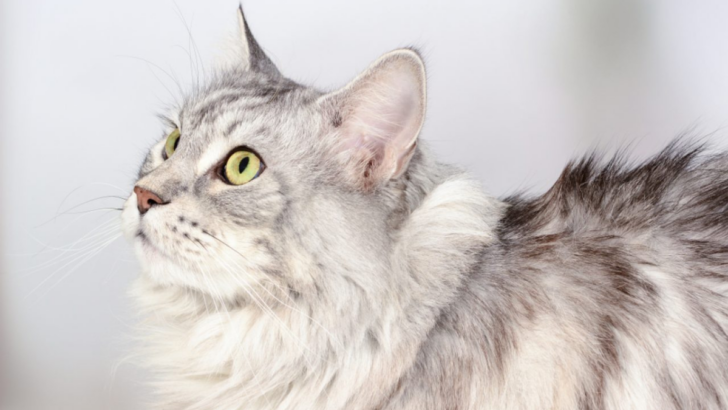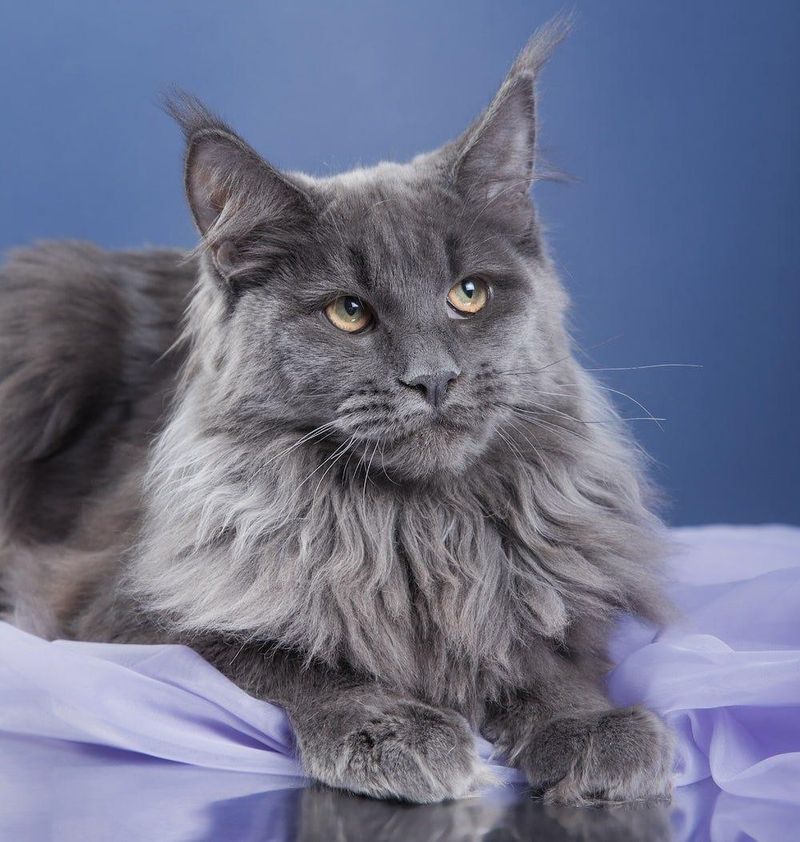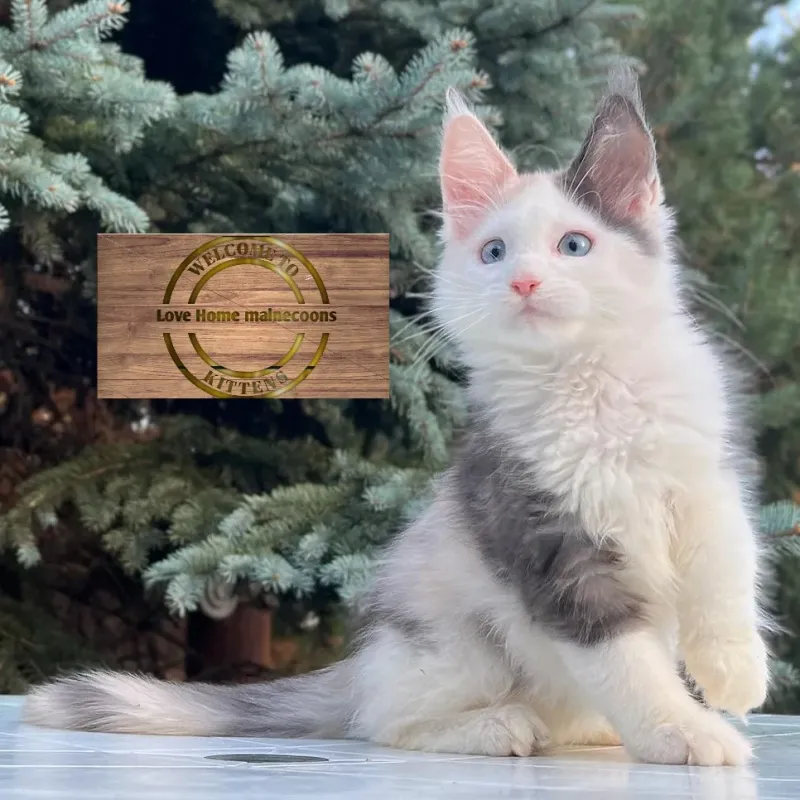Grey Maine Coons are adorable, affectionate cats known for their fluffy grey fur. However, they are not officially called grey.
As a matter of fact, grey Coons officially belong to blue Coons, as confirmed by the Cat Fanciers’ Association.
What does that even mean?! Here’s the thing: When we discuss the different colors and patterns of a cat’s coat, we’re judging them based on what different cat associations and cat shows determine to be right.
Therefore, we refer to grey and silver cats as blue because of the blue hue that appears under certain angles or lights. But, Maine Coons can generally assume an array of colors and patterns.
Maine Coons can be white, black, red, ebony, grey, blue, cream, orange, beige, tan, chocolate, brown, and sable (I hope we didn’t forget one!) And, as for the patterns, Maine Coons can be solid, bi-color, tri-color or calico, color point, tabby, and tortoiseshell.
But, what makes grey Maine Coons… grey? Turns out that grey, silver, lilac, and blue (every odd shade out of the bunch) come from a gene that’s known as the dilute gene. And, you might have guessed, the dilute genes are responsible for the creation of diluted shades of different colors, such as black.
However, there’s a catch! Both parents of a Maine Coon cat would have to possess the dilute gene for her to have a diluted color coat. And, the dilute gene’s pretty rare (making grey Maine Coons pretty rare, too).
So, when you cross paths with a grey Maine Coon you’re actually crossing paths with a black Maine Coon whose parents share the dilute gene. But, we can’t brush over other diluted shades you might encounter!
1. Grey Coons

Cats that don’t possess the dilute gene almost always have normal pigmentation. But, cats that possess the dilute gene sometimes have spots and patches without pigmentation (rather than having a uniform diluted color coat).
And, grey Coons are one of the types that have that uniform dilute color around the entire body. Now, they can be a lighter or a darker shade of grey depending on the dilute gene. But, as long as that grey color stretches from the tip of the nose to the end of the tail, they’re considered grey Coons.
2. Grey and Cream Coons
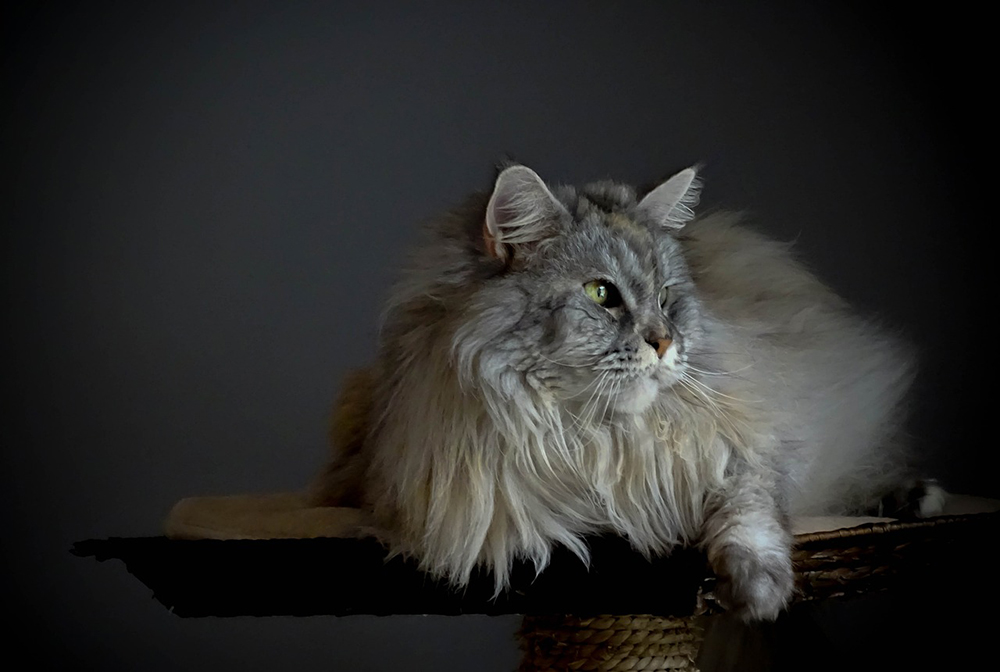
Grey and cream Coons, as the name suggests, possess more than one color throughout the body.
More times than not, these frisky felines are predominantly grey with cream patches scattered around the body. And, these cream patches are typically scattered around the chest, back, and stomach area.
3. Grey and White Coons
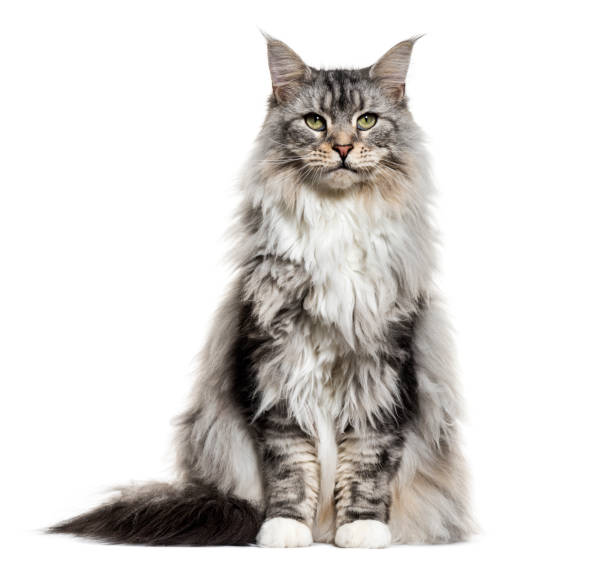
“Argh, what’s the difference between white and cream!?” Other than the shades not being the same, there’s another prominent factor playing a role here. When we’re talking about grey and cream Coons, we’re expecting the cream patches to be scattered around the body without a pattern.
But, when we’re talking about grey and white Coons, white patches are almost always scattered around the stomach and face, stomach, and socks (of course, we’re referring to paws). But, they’re predominantly grey regardless of the patches.
4. Grey, Cream, and White Coons
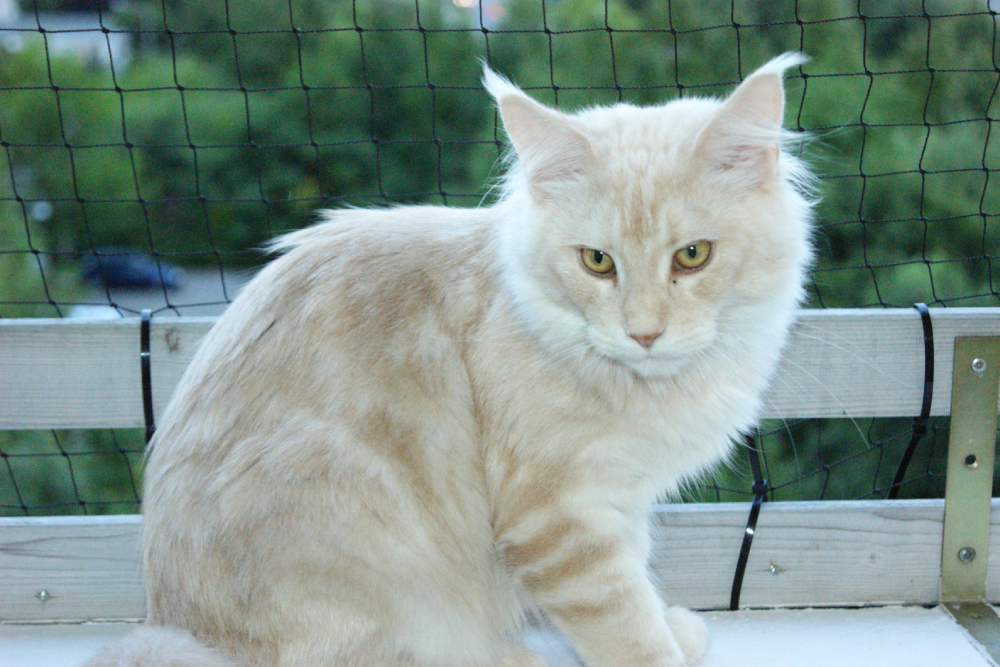
Oh, now we’re getting somewhere! Grey Maine Coons are some of the most stunning breeds out of the bunch. And, the fact that they possess such versatile coats has to be one of the reasons why. Grey, cream, and white Coons, as the name suggests, possess three colors.
But, they’re not predominantly grey. More times than not, they are white with grey and cream areas neatly arranged around the body. How adorable does that sound?!
5. Grey Tabby Coons
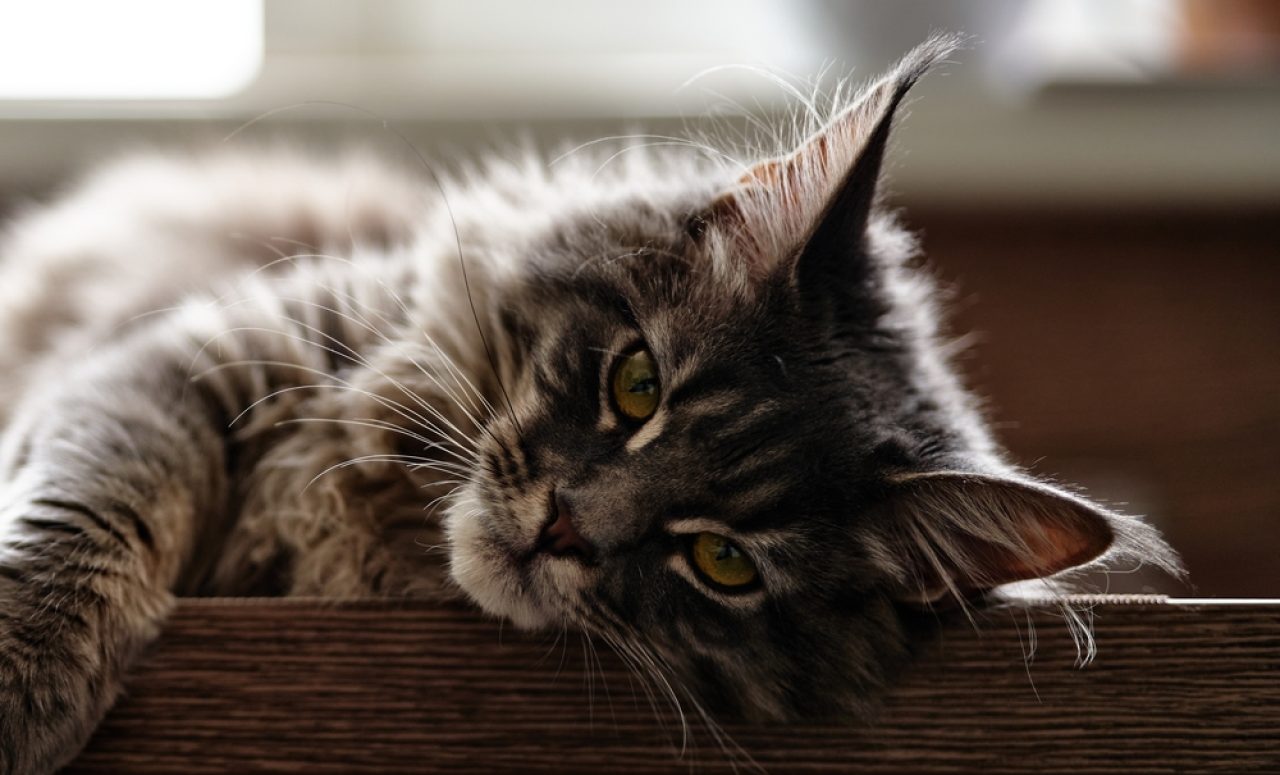
Gray tabby Coons happen to be one of the most common types! And, they’re absolutely astonishing with the cream undercoat, predominantly light gray coat, and dark grey markings around the body.
Now, the pattern can consist of different markings such as lines, spots, stripes, and swirls. But, most tabby Coons have that little “m” mark on the forehead that sets them apart from other cats. And, grey tabby Coons typically possess rose noses and rose paw pads. Now, that doesn’t help with the whole “we want to cuddle them forever” problem.
6. Grey and Silver Tabby Coon
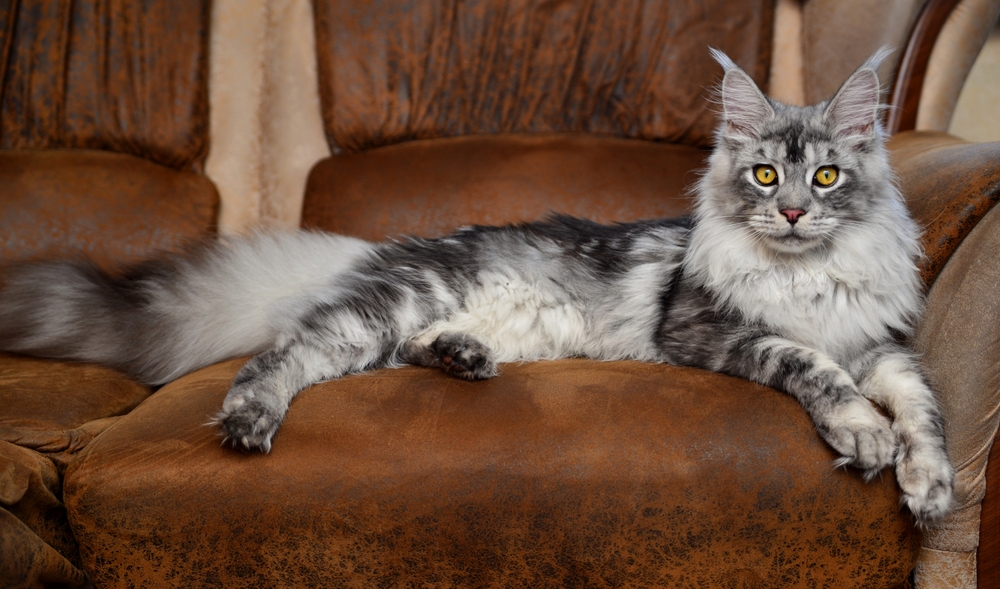
Grey and silver tabbies are pretty similar to the ones we discussed beforehand. But, the undercoat’s predominantly light grey with a silver coat on top and light gray markings. And, the pattern’s typically that of a tabby with a bunch of stripes, swirls, or other markings.
Oh and, grey and silver tabby Maine Coons possess rose noses and paw pads, too. Now, we’re not saying you should get a grey and silver tabby Coon… But, we’re saying you should get a grey and silver tabby Coon!
7. Grey, Tabby, and White Coons
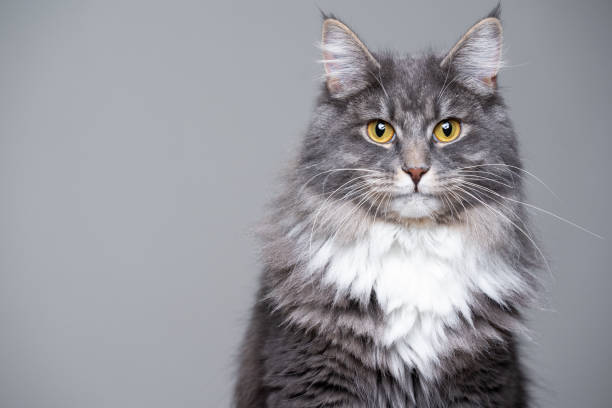
Oh, you have no clue how many greys, creams, and other neutral colors a Maine Coon can sport. Like a true trendsetter, right!? Grey, tabby, and white Coons typically have a light grey undercoat with dark grey stripes and swirls and white patches scattered around the body.
Some might suggest that a grey, tabby, and white Coon should have white patches on the face, stomach, and paws. But, there’s no evidence to back that up.
8. Chinchilla Grey Silver Coon
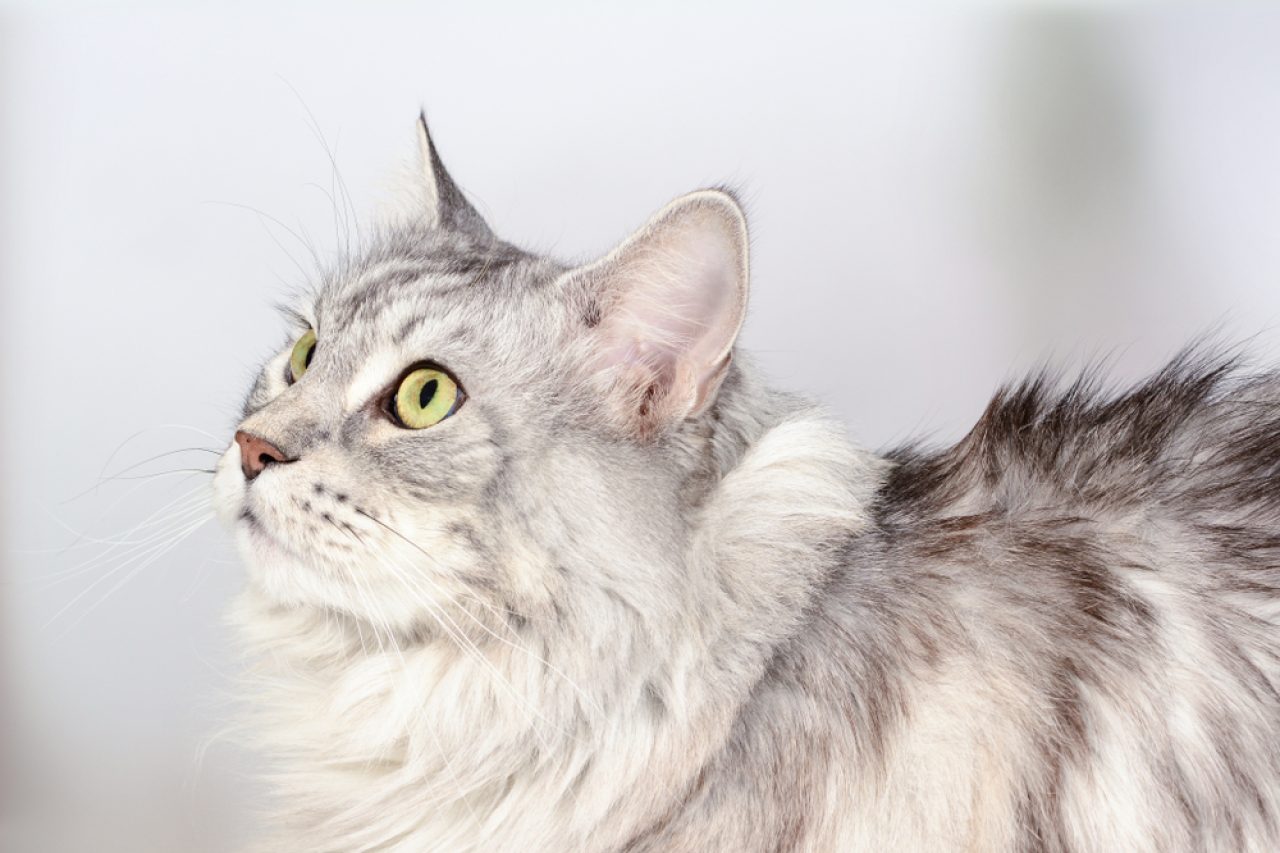
“Wait, what? Are we even on the same page or maybe you’re talking about a completely different animal?!” We understand the confusion. But, there are times when colors and patterns are described with a little help from other animals. A fawn color’s a warm cream, for example. So, a chinchilla color is cold, light grey with a sparkling silver appearance.
And, that’s exactly what the grey Maine Coon we’re talking about looks like! A chinchilla grey silver Coon should have a white undercoat with grey fluff neatly arranged around the entire body. The tips of the fluff should be grey giving off that sparkling silver appearance.
9. Shaded Grey Silver Coon
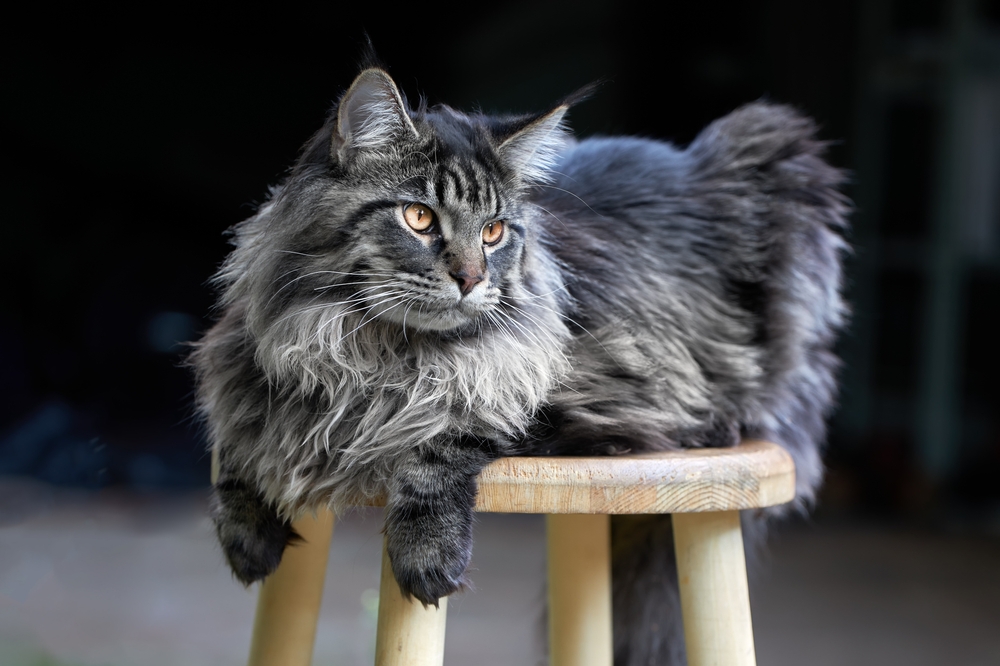
Now, a shaded grey silver Coon looks pretty much exactly like a chinchilla grey silver Coon. But, without the sparkling silver thing.
Actually, a shaded grey silver Coon typically appears lighter because of the predominantly white undercoat with only a little bit of light grey shading down the sides of the body, face, and tail. And, they have white patches on the face, chest, and paws!
10. Grey Smoke Coon
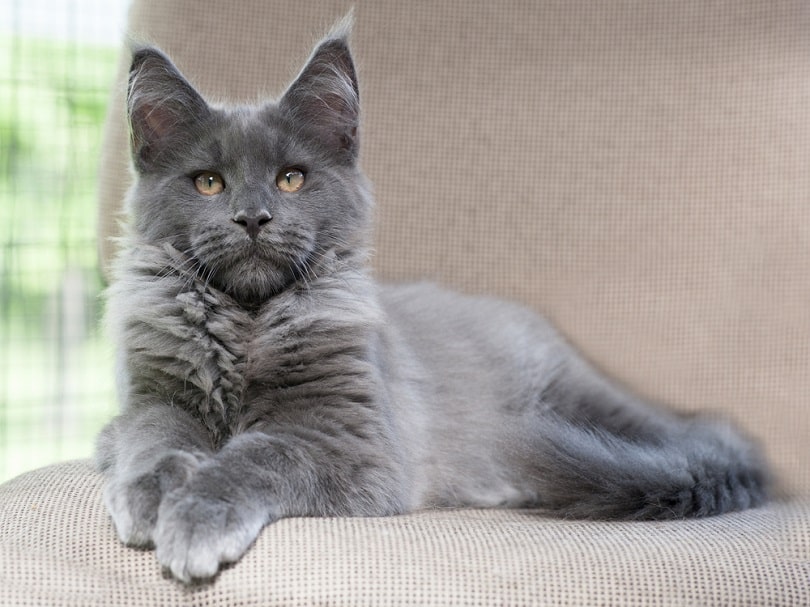
You’ve heard of the black smoke Maine Coon, right!? Here comes the diluted version, otherwise known as the grey-smoke Maine Coon! They are some of the most mysterious-looking breeds out there with a white undercoat sprinkled with dark grey hairs.
They look dark grey while they’re sleeping or lounging on the sofa. But, the moment they move, they reveal the white undercoat which goes purrfectly with white ear tufts and frills. Who wouldn’t want to show off one of these beautiful babies on Instagram or Tiktok?!
11. Blue Maine Coon
The Blue Maine Coon is a sight to behold, with its striking blue-gray fur that gives it a regal appearance. This shade is not only aesthetically pleasing but also exudes a calm and gentle demeanor. The subtle mix of blue and gray creates a soothing visual effect, perfect for those seeking a peaceful companion.
In terms of personality, these cats are known for their friendly and sociable nature. Despite their large size, they are incredibly gentle and affectionate. A Blue Maine Coon can be the perfect addition to families, offering companionship and love.
12. Blue Smoke Maine Coon
With its silvery gray undercoat, the Blue Smoke Maine Coon elevates the classic blue shade to a whole new level, creating an enchanting visual effect. This unique and rare color is a favorite among Maine Coon enthusiasts.
Blue Smoke Maine Coons are not just visually stunning; they also have a playful and curious nature. These cats enjoy engaging in interactive play and exploring their surroundings. Their intelligence and inquisitive personality make them a delight to have around, offering endless entertainment and companionship.
13. Blue Bicolor Maine Coon
With its beautiful mix of blue-gray and white fur, the Blue Bicolor Maine Coon stands out, showcasing a lovely contrast that accentuates their striking features. The white bib and paws add a touch of playful elegance.
In addition to their captivating looks, Blue Bicolor Maine Coons are known for their affectionate and friendly personalities. They enjoy being around people and are particularly good with children. Their playful demeanor ensures that there is never a dull moment around them, making them wonderful companions.
14. Silver and Blue Maine Coon
When it comes to stunning coats, Silver and Blue Maine Coons are second to none, with their unique combination of silver and blue shades that give them a remarkable and captivating look.
Aside from their breathtaking appearance, these cats are known for their calm and gentle nature. They are easygoing and adapt well to different home environments. Their serene temperament makes them ideal for those seeking a tranquil and loving feline companion.
15. Diluted Blue Classic Tabby Maine Coon
Combining the iconic tabby pattern with a delicate blue shade, the Diluted Blue Classic Tabby Maine Coon offers a unique and captivating appearance. The soft blue hue brings out the elegance of the classic tabby stripes.
These cats are known for their adventurous spirit and love of exploration. They enjoy outdoor activities and are often seen exploring and climbing. Despite their adventurous side, they are incredibly affectionate and enjoy spending time with their human companions, making them a perfect blend of energy and love.
